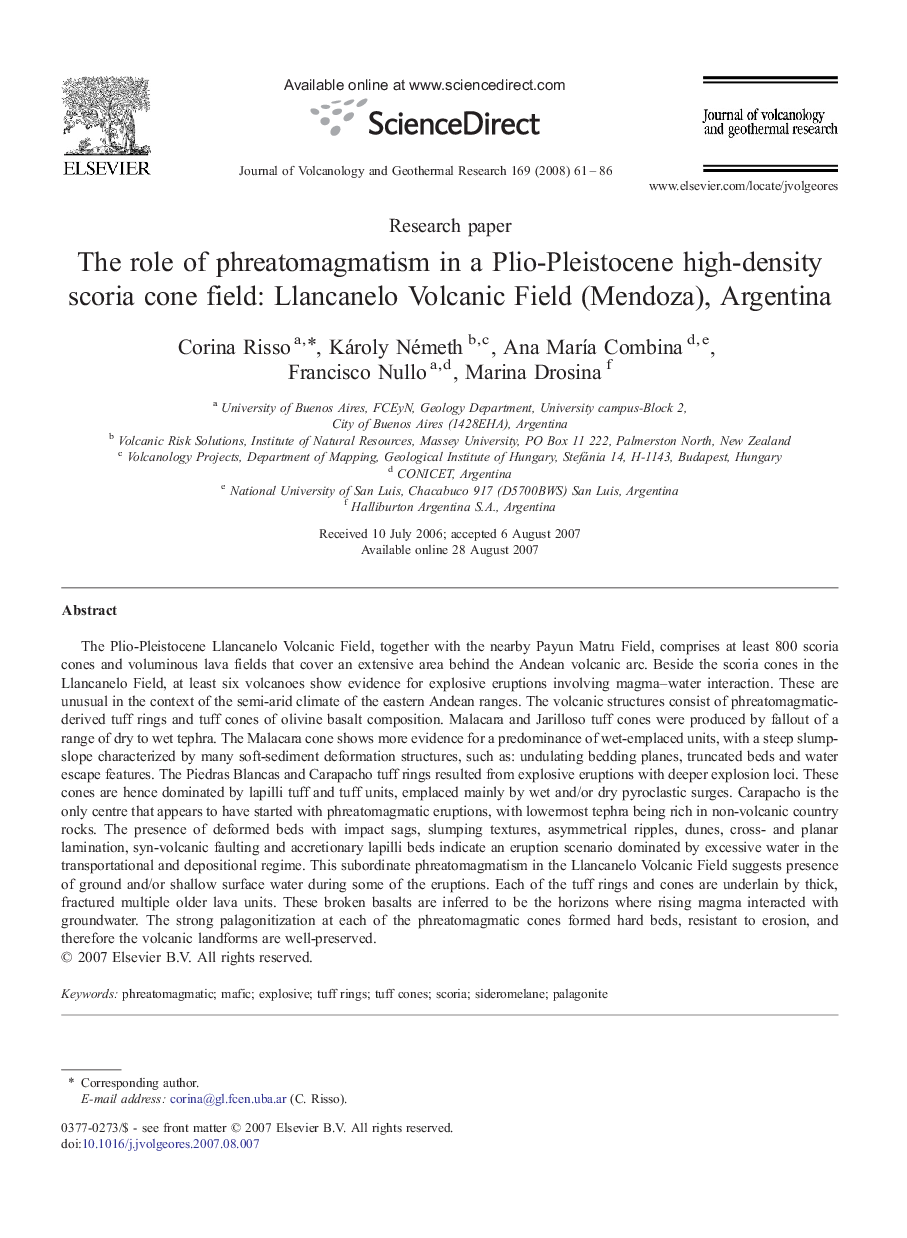| کد مقاله | کد نشریه | سال انتشار | مقاله انگلیسی | نسخه تمام متن |
|---|---|---|---|---|
| 4714920 | 1638456 | 2008 | 26 صفحه PDF | دانلود رایگان |

The Plio-Pleistocene Llancanelo Volcanic Field, together with the nearby Payun Matru Field, comprises at least 800 scoria cones and voluminous lava fields that cover an extensive area behind the Andean volcanic arc. Beside the scoria cones in the Llancanelo Field, at least six volcanoes show evidence for explosive eruptions involving magma–water interaction. These are unusual in the context of the semi-arid climate of the eastern Andean ranges. The volcanic structures consist of phreatomagmatic-derived tuff rings and tuff cones of olivine basalt composition. Malacara and Jarilloso tuff cones were produced by fallout of a range of dry to wet tephra. The Malacara cone shows more evidence for a predominance of wet-emplaced units, with a steep slump-slope characterized by many soft-sediment deformation structures, such as: undulating bedding planes, truncated beds and water escape features. The Piedras Blancas and Carapacho tuff rings resulted from explosive eruptions with deeper explosion loci. These cones are hence dominated by lapilli tuff and tuff units, emplaced mainly by wet and/or dry pyroclastic surges. Carapacho is the only centre that appears to have started with phreatomagmatic eruptions, with lowermost tephra being rich in non-volcanic country rocks. The presence of deformed beds with impact sags, slumping textures, asymmetrical ripples, dunes, cross- and planar lamination, syn-volcanic faulting and accretionary lapilli beds indicate an eruption scenario dominated by excessive water in the transportational and depositional regime. This subordinate phreatomagmatism in the Llancanelo Volcanic Field suggests presence of ground and/or shallow surface water during some of the eruptions. Each of the tuff rings and cones are underlain by thick, fractured multiple older lava units. These broken basalts are inferred to be the horizons where rising magma interacted with groundwater. The strong palagonitization at each of the phreatomagmatic cones formed hard beds, resistant to erosion, and therefore the volcanic landforms are well-preserved.
Journal: Journal of Volcanology and Geothermal Research - Volume 169, Issues 1–2, 1 January 2008, Pages 61–86